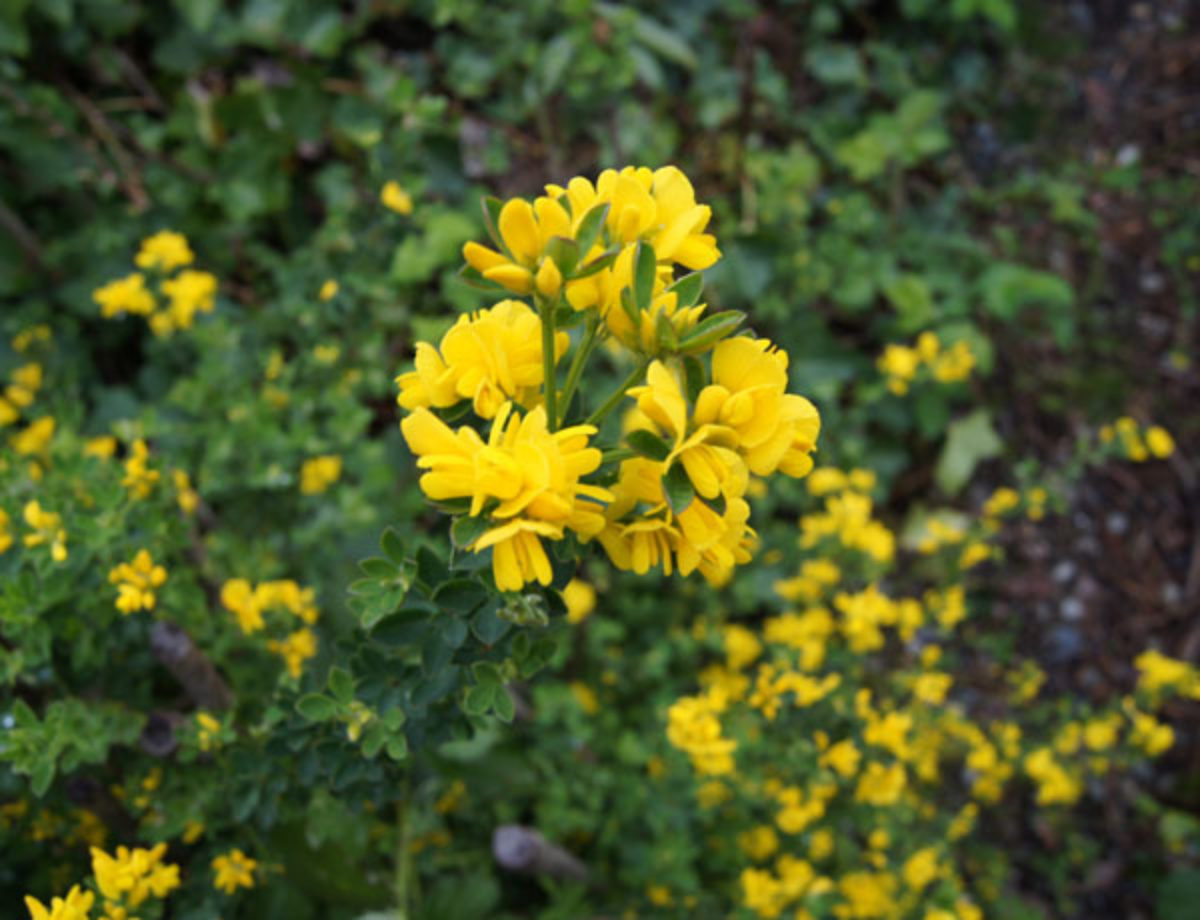

It was originally the emblem of Geoffrey of Anjou, father of Henry II of England. The Plantagenet kings used common broom (known as planta genista in Latin) as an emblem and took their name from it. On the west coast of the United States, French broom ( Genista monspessulana), Mediterranean broom ( Genista linifolia) and Spanish broom ( Spartium junceum) are also considered noxious invasives, as broom quickly crowds out native vegetation, and grow most prolifically in the least accessible areas. Biological control for broom in New Zealand has been investigated since the mid-1980s. Similarly, it is a major problem species in the cooler and wetter areas of southern Australia and New Zealand. It has become a naturalised invasive weed, and due to its aggressive seed dispersal broom removal has proved very difficult. It is known in much of the pacific northwest as Scotch broom. On the east and west coasts of North America, common broom ( Cytisus scoparius) was introduced as an ornamental plant (e.g.:California since the 1860s). multiflorus) and Warminster broom ( Cytisus × praecox, hybrid between C. Many of the most popular brooms in gardens are hybrids, notably Kew broom ( Cytisus × kewensis, hybrid between C. Species of broom popular in horticulture are purple broom ( Chamaecytisus purpureus purple flowers), Atlas broom (or Moroccan broom) ( Argyrocytisus battandieri, with silvery foliage), dwarf broom ( Cytisus procumbens), Provence broom ( Cytisus purgans) and Spanish broom ( Spartium junceum). Tagasaste ( Chamaecytisus proliferus), a Canary Islands native, is widely grown as sheep fodder. mine tailings) and sand dune stabilising.

They are widely used as ornamental landscape plants and also for wasteland reclamation (e.g. In cultivation they need little care, though they need good drainage and perform poorly on wet soils. Legume or pod.īrooms tolerate (and often thrive best in) poor soils and growing conditions. Hairy ovary with the long style, thickened upwards, and spirally curved. Cultivation Ĭytisus scoparius, Common Broom.

Use of the branches of these plants for sweeping gave rise to the term broom for sweeping tools in the 15th century, gradually replacing Old English besema (which survives as dialectal or archaic besom). Old English bróm is from a common West Germanic * bráma- (Old High German brâmo, "bramble"), from a Germanic stem bræ̂m- from Proto-Indo-European *bh(e)rem- "to project a point", with an original sense of "thorny shrub" or similar. Many genera also accumulate quinolizidine alkaloids, ammodendrine-type di piperidine alkaloids, and macrocyclic pyrrolizidine alkaloids. Most (and possibly all) genera in the tribe produce 5- O-methylgenistein. … bilabiate calyces with a bifid upper lip and a trifid lower lip, … the lack of an aril, or the presence of an aril but on the short side of the seed, and stamen filaments fused in a closed tube with markedly dimorphic anthers … and presence of α- pyridone alkaloids. The tribe does not currently have a node-based definition, but several morphological synapomorphies have been identified: The members of this tribe consistently form a monophyletic clade in molecular phylogenetic analyses. The Genisteae arose 32.3 ± 2.9 million years ago (in the Oligocene). Anarthrophytum and Sellocharis are also South American and Argyrolobium ranges into India. However, the largest genus, Lupinus, is most diverse in North and South America. The tribe's greatest diversity is in the Mediterranean, and most genera are native to Europe, Africa, the Canary Islands, India and southwest Asia. It includes a number of well-known plants including broom, lupine ( lupin), gorse and laburnum. Genisteae is a tribe of trees, shrubs and herbaceous plants in the subfamily Faboideae of the family Fabaceae. Genisteae subtribe Genistinae Bronn 1822.Argyrocytisus (Maire) Frodin & Heywood ex Raynaud.For the brooms of New Zealand, see Carmichaelia.


 0 kommentar(er)
0 kommentar(er)
